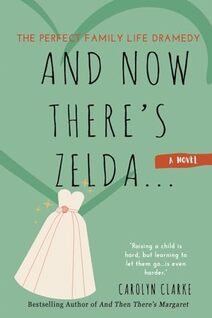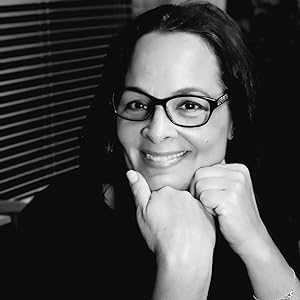Q: What inspired you to write “About the Carleton Sisters,” and what do you hope readers will take away from the story? Answer: I grew up close in age to two sisters; I was the eldest. We were young during WWII when our father was overseas. Our mother lived with her sister and their children in a rented house in their central North Dakota hometown. I was old enough to remember the war years. My sisters and I had a hate/love relationship with each other. The number three meant that one of us was doomed to be an outsider. That was usually me. I was mother’s helper, bossy, and something of a know-it-all. I was also very competitive and determined to be the favorite. This dynamic, learned very young, made it easy to “imagine into” similar dynamics in sister characters. Lorraine, the eldest and dutiful sister, emerged first. Even as my pen hit paper, I saw her behind the counter of a roadside diner on Highway 99 in the Central Valley of California. Her pink uniform, her imprinted name on the breast pocket and how she ordered the other waitresses around. She was easy to write. Julie came to mind because a good friend was dealing with leaking breast implants and preparing to have them removed. Her situation made me wonder about the American fascination with women’s breasts and how many women allow that to define themselves. When I imagined the icons who exemplified women’s breasts, I thought of Hollywood. That seemed too easy and cliché. Having been to Las Vegas shows, I considered a showgirl. Of course, many of those women danced or paraded on stage bare breasted. That’s how Julie was born. Becky was another no-brainer. I’ve worked for years as a therapist in addiction medicine. Sadly, I’ve assessed and counseled too many Becky’s in the world to not be intimately acquainted with what is often the wounding that gets them into addiction. She needed to be the youngest, the almost “forgotten” sister. That put Julie squarely in the middle. My hope is that readers will identify in some way with these sisters, whether it’s the competitive nature of siblings, how birth order affects someone, or the kind of estrangement and need for reconciliation that eventually happens in the story. Mostly, I hope they like a good story and are inspired to keep reading. Q: The Carleton sisters seem to have a complex dynamic. Can you share some insights into their characters and how they evolved throughout the narrative? Answer: The dynamic of family/sibling estrangement is perhaps more common in our culture than not. Each one of the sisters appears to be hanging onto some idea of themselves that keeps them stuck, defensive and separated from each other. Lorraine holds on with clenched teeth to her need for control, seeing herself as the savior of the family and the only responsible sister. Her defensiveness keeps her isolated, both from others and from her own heart. It’s her encounter with the pastor, a romance that clearly lives in her mind, that impels her toward the attempted gesture that finally breaks her. That incident makes it possible for her to begin to slowly soften and ultimately become “welcoming” to her sisters. Julie escaped the family situation at seventeen after her world was opened by her dance teacher. She landed a plum job with a class show in Las Vegas and stayed for nearly 20 years. Yet, behind the scenes, her glamorous life was full of holes: three marriages, being fired from her job, then lying about it, and the end of a career she’d invested her entire self in. When she meets the cowboy on the bus, she’s brought back to where she began. This initiates the moment she is forced to ease into reality. Her dance teacher becomes the unlikely door opener once more. Like Lorraine, Becky came easily. Her voice and her way of being in the world, familiar from my work and life experience, fueled this portrait of an almost totally broken woman. But behind the sad ruins, pulsed the wound of her father, the person she most adored, disappearing without notice when Becky was entering adolescence. Her story like so many who live in perpetual sadness simply wrote itself on the page. What I loved about this character was her hidden sensitivity and her wry humor. She was the most fun to write. She was also the character who had the longest way to travel in order to get herself back up on the pavement of life. Q: Historical fiction often requires extensive research. What kind of research did you undertake to accurately portray the time period and setting of the book? Answer: The late 90s time period portrayed in the book was when I started the book and also when I did my primary research. I wanted a small agricultural community because that’s something I knew from growing up in western South Dakota. Small towns have their own culture. The Central Valley of California seemed perfect for what I wanted. Modesto represented a great prototype, partly because of the movie “American Graffiti.” That movie mimicked my own growing up in the 50s. “About the Carleton Sisters” required multi-faceted research. To begin, I made countless road trips to Modesto, California, while living in San Diego. I walked the streets, talked to newspaper reporters, drove in and through countless trailer parks, visited the library, the history museums, etc. I was adopted by a client’s family who lived there and invited me to a Fourth of July celebration. I attended the Almond Blossom Festival and walked in the almond orchards. Visited the Almond Growers corporate offices. Drove in and through the neighboring towns and on the country roads. For Julie, I traveled countless times to Las Vegas. On an early trip, I was introduced to a showgirl through the UNLV archive librarians who took a particular interest in my project. That particular showgirl made it possible for me to attend the show in the press box, to meet the dancer director and talk with her. I stayed in various hotels and visited shows outside of Jubilee (then at the Riviera). I walked through countless casinos and watched lounge shows. For some years, I remained in touch with the initial showgirl. Becky came right out of Modesto so to speak. All the research I did for Lorraine served me for Becky, including the notion that there is a “right/wrong” side of the river to live on. I’d always loved trains (my grandfather was a train man), so the train/bus depots were part of my exploration. Throughout the research, I was deeply engaged and highly motivated. These sisters lived with me 25 years before they found their way to the page. Q: “About the Carleton Sisters” explores themes of family, love, and resilience. How do you see these themes manifesting in the lives of the Carleton sisters, and what do you think modern readers can learn from their experiences? Answer: The Carleton sisters aren’t unique. Over the years, listening to countless stories from men and women who struggle with family of origin issues where the underlying complaints of jealousy, competition, disloyalty and abandonment are the fodder of therapy sessions. The invisible slights and innuendos as well as the blatant insults and conflict comprise the “surface” of what often prove to be invisible and long hurtful wounds. When there are emotionally absent or unloving parents at the helm, the wounding can feel permanent and the scars beyond healing. There’s often an inciting incident. With the Carleton sisters, it appears to be the father’s sudden disappearance. But, as the story unfolds and the sisters individually begin to understand that they weren’t the heart of the problem, as their lives present challenges they need to overcome, and an emotional landscape that holds them back begins to dissolve, they’re able to move toward reconciliation. I chose midlife because that’s often when individuals begin to realize their mortality for the first time and to ask, “Am I living the life I want to live?” Until most of us reach that point, we’re often ruled by our impulses and instincts, other invisible forces we don’t understand even exist. As I said earlier, I hope the readers can see something of themselves and perhaps their own family relationships. I want the reader to close the book or Kindle feeling a sense of hope and the enjoyment that comes from a good story. Visit Dian on her website:
https://diangreenwood.com Join Dian on Faceboook: www.facebook.com/DianGreenwoodAuthor Follow Dian on Instagram: www.instagram.com/diangreenwood/ Engage Dian on twitter: https://twitter.com/greenwooddian LINK for BOOK: https://www.amazon.com/About-Carleton-Sisters-Dian-Greenwood/dp/1647424402
0 Comments
Q: What inspired you to write humorous fiction from a woman's perspective? Answer: I've always enjoyed reading lighthearted books written in the first person by women. It feels more intimate to be inside their heads, following along on their journeys. It's up close and personal. When I was younger, I devoured these ‘chick lit’ reads because they were easy and fun. With their colorful, cute covers depicting dreamy landscapes, snowflakes, and sprinkles on cupcakes, these books often feature strong female protagonists, although many are single millennials swiping left in search of love, struggling for independence, or on a noble quest for political correctness. However, as I've aged, I've lost interest in the frivolous romps, typical angst, and adventures of 20 or even 30-somethings. Writing about characters I can identify with is frankly what inspired me to write my debut novel And Then There’s Margaret. Fleshing out the story and the characters I wanted came easy as I observed the world around me, noticing and hearing about all the potential situations unique to women aged 40 and above, including relationships, work, family dynamics, aging parents and societal expectations. For those books written in this genre, it's refreshing to see the mix of funny and messy, and the messy feeling all too real and relatable. It's about finding humor in the everyday challenges and triumphs of being a woman smack dab in the middle of the sandwich generation. I know I've gained a deeper sense of empathy and understanding for what middle aged women are currently experiencing. Ultimately, it's about finding humor in the complexities of life and offering readers a fresh, resonating, and entertaining take on the world through a female lens. Q: How do you infuse humor into your stories while addressing important themes or issues? Answer: Writing dramedies can be tricky. This mixed genre, blending drama and comedy, requires characters and situations that feel genuine, unpredictable, flawed, and relatable. Serious themes such as illness, family struggles, divorce, and aging need to be fleshed out with added details to personalize them, while humorous moments should be sprinkled throughout to lighten the tone. As a relatively new writer in the literary world, I've learned that creating characters with distinct personalities, quirks, and comedic traits is essential. Both of my books revolve around the complex relationship between a daughter-in-law and mother-in-law. Despite the challenges they face, Allie and Margaret ultimately grow closer and become better people, although Allie fears turning into her mother-in-law now that the shoe is on the other foot in And Now There’s Zelda – the stories are filled with realism and humor that enlighten and perhaps soften the narrative. I’ve also learned that dialogue and wordplay play a crucial role in infusing humor into serious conversations or situations. Crafting witty exchanges between characters can lighten the mood without undermining the gravity of the underlying themes. Ensuring each chapter and scene remains engaging and unpredictable while balancing humor and depth is essential in dramedy, offering readers an entertaining and meaningful experience on multiple levels. Q: Can you share a favorite comedic moment or character from one of your novels? Answer: One of my favorite characters besides Allie and Margaret is Val, Allie’s best friend and troubleshooter. Val is extremely flawed but identifiable. She’s incredibly distinct when it comes to her colorful personality, her voice, and mannerisms. Since Val is one of the characters who could embody all your friends rolled up into one, I had to get it right, even when it came to describing her facial expressions and gestures. In each scene with Val, there was fun and drama. Val adds the right dosage of laughter and makes the scenes she’s in come alive. Q: How do you approach balancing humor with emotional depth in your writing? Answer: Besides getting older and feeling it, I feel I’ve gained the wisdom that comes with age and experience. I have much better control over my emotions. I know myself better and have a greater sense of compassion and empathy towards others. And that’s important when it comes to balancing humor and emotional depth. Over the course of writing the first book, there were a few approaches I learned from a series of creative writing courses that helped with balancing and emotional depth. It’s referred to as character development. I struggled with this at first as it’s not easy creating well-rounded characters with depth and complexity, including both humorous and serious traits. You have to allow the characters to evolve and reveal different facets of themselves throughout the story, showing vulnerability and emotional depth alongside their comedic tendencies. Again, using humor to lighten intense moments or to provide relief after emotional scenes, while also delving into the characters' inner struggles and emotional arcs is challenging but important to accomplish in this genre. Timing and pacing are also necessary so that the injected humor naturally arises from the characters' interactions (and their actions and body language) and the unfolding plot, while also giving sufficient space for emotional moments to resonate with readers. It took me a while to learn this, and I hope to continue developing this skill. Lastly, I believe that you need to allow readers to empathize with your characters’ struggles and triumphs. Even in humorous situations, a character’s emotional depth needs to shine through, especially when trying to resonate with readers’ own experiences and emotions. I want my core readers who would enjoy my books to laugh, cry, and reflect to have a deeper connection and emotional investment in the story. Visit Carolyn on her website:
https://henlitcentral.com/ Join Carolyn on Faceboook: www.facebook.com/CarolynClarkeAuthor Follow Carolyn on Instagram: www.instagram.com/carolynclarkeauthor/ Engage Carolyn on twitter: https://twitter.com/CarolynRClarke LINK for BOOK: https://www.amazon.com/Now-Theres-Zelda-Perfect-Dramedy/dp/1685134114 |
AuthorJane Ubell-Meyer founded Bedside Reading in 2017. Prior to that she was a TV and Film producer. She has spend the last five years promoting, marketing and talking to authors and others who are experts in the field. Archives
May 2024
Categories |
Contact
Bedside Reading, LLC , 700 Canal Street Suite 176A Stamford CT 06902
For more information contact: jane@bedsidereading.com 917 848 3353
Media
Privacy Policy
Terms & Refund Policy
Bedside Reading® is a Registered Trademark
Bedside Reading, LLC , 700 Canal Street Suite 176A Stamford CT 06902
For more information contact: jane@bedsidereading.com 917 848 3353
Media
Privacy Policy
Terms & Refund Policy
Bedside Reading® is a Registered Trademark






 RSS Feed
RSS Feed